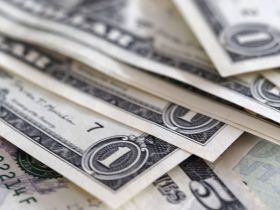Federal Reserve officials said during their March policymaking meeting that inflation will likely continue to slow this year, according to minutes released Wednesday, but some still fretted over the possibility that inflation could remain stubbornly high.
Those fears have now worsened, at least on Wall Street, which means that interest rates could remain higher for longer if prices don’t budge.
While Fed officials “observed that significant progress had been made over the past year” despite disappointing inflation readings for January and February, some also “noted that the recent increases in inflation had been relatively broad based,” the minutes said.
The Fed kept its key interest rate at a two-decade high for the fifth straight meeting last month, at a range of 5.25-5.5%. Fed Chair Jerome Powell has said that policymakers want to see more evidence that inflation is headed toward their 2% goal.
But Wednesday’s Consumer Price Index report suggests that getting to that goal will continue to be a turbulent ride.
Consumer prices rose 3.5% in March from a year earlier, up considerably from February’s 3.2% and higher than the 3.4% economists were excepting. On a monthly basis, consumer prices jumped 0.4% in March, also above expectations. Surging gas prices and sky-high mortgages and rent were the culprits behind the hotter-than-expected reading.
Stocks tanked on Wednesday after the report was released as bond yields shot up. The odds that the first rate cut will come in June also dropped after CPI was released, according to futures. Goldman Sachs pushed back its call for the first rate cut to July from June and Bank of America is now projecting a June rate cut with “low confidence.”
“The likelihood of a June Fed rate cut declined materially today,” Ronald Temple, chief market strategist at Lazard, said in a note Wednesday. “Three months of surprisingly strong services inflation are difficult to explain away and suggest that demand strength could be sustaining elevated US inflation, which limits the Fed’s ability to ease policy.”
According to the Fed minutes, officials generally noted that “they continued to expect that inflation would return to 2 percent over the medium term.” Economists have been expecting slowing rent growth to filter through to inflation gauges. Powell said it is only a matter of time until it happens, but that hasn’t happened yet. Insurance costs have also been pushing up inflation.
Last year, inflation slowed considerably thanks to improving supply-side conditions, such as a bigger workforce due to immigration, and more efficient supply chains. It remains to be seen whether the supply side will continue to drag inflation lower this year or if weakening consumer demand and potentially rising unemployment will play more of a role.
The timing of that first rate cut remains a key issue for the Fed because there are economic consequences if the central bank cuts too soon — or if it cuts too late. That’s why the Fed is waiting for more data before making any conclusions about the economy, including whether inflation has indeed stalled. But time is of the essence since it’s already been three months of surprising inflation growth.
Powell frequently says that the road down to 2% will likely be a bumpy one, and it has been. The Fed chief said last month that the disappointing inflation readings for the beginning of the year might have been due to “seasonal factors,” but not all Fed policymakers agreed with that assessment during the March meeting, saying that “the recent increases in inflation had been relatively broad based and therefore should not be discounted as merely statistical aberrations,” according to the minutes.
Read the full article here











Leave a Reply